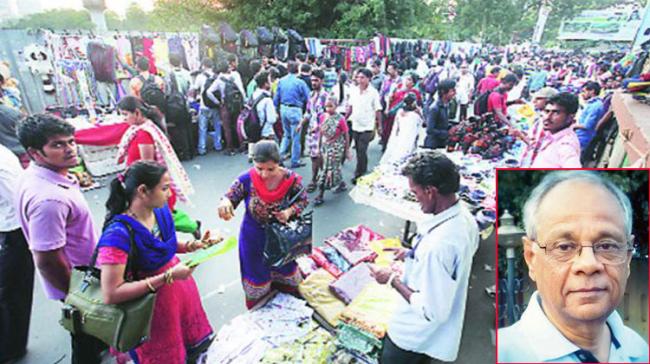Time To Regulate Hawker Menace, Without Affecting Their Livelihood, Though

By Mahesh Vijapurkar
Two events cleared the access to and enabled free movement of commuters within the stations of the Mumbai region local railway system. One was the stampede at Elphinstone, and the other is the Raj Thackeray ultimatum to have hawkers cleared from there in 15 days. Or else, he hinted, things could get violent.
Time and again, the authorities have been more than sluggish on the hawker menace, at one time asking people not to patronize them, thus shifting the onus. It implied in the past that the hawkers were incalcitrant – which they indeed are – despite the best efforts – which indeed was not – and people have to blame themselves.
Thackeray’s Maharashtra Navnirman Sena has been losing steam for a while, and the cadre base weakened. It has to reassert itself and the issue of safety while commuting to work and back came in handy. He touched everyone’s concern by visiting the Railway offices and said, “If hawkers were not removed in 15 days, my next morcha may not be peaceful”.
He has touched the chord in every commuter, including those he is inimical to – those from Bihar and UP. The issue was in that secular, and dealt with a significant weakness in the management of Mumbai, which is clever but not smart. This aspect of management is to be found at all level, including in policies that include dealing with hawkers whose number the civic bodies do not know.
However, Raj Thackeray is less the focus of this column than the hawkers are. They have been a part of Mumbai’s troubled life and have sprung up in gay abandon, occupying spaces where the footfalls are – approaches to stations, any foot over-bridge, any sidewalk. While the commuters gripe about the inconvenience, they also patronize them.
Hawkers are part of city’s economy by being a convenient store because many migrants and of late, even locals, find it an easy and quick way to earn a livelihood. These are perhaps the uncaptured numbers while calculating the city region’s GDP. They are also there because real estate prices make it impossible for even modest mom-and-pop store to come up.
The parliament had put on statute norms on street vending and its regulation to protect livelihoods of the hawkers – their right to livelihoods is also protected by a Supreme Court verdict much earlier - way back in 2014 but Maharashtra has not put in place its hawkers’ policy yet. At least one trade union of hawkers says it is so because of the bribes worth Rs 2,000 crore the hawkers pay.
That number is perhaps exaggerated but there indeed is a vested interest because of the personnel of departments which have to deal with these hawkers. Hawkers are removed, they return after paying a fine, and a hike in penalties do not necessarily translate into a deterrence but increases the quantum of bribes. For the population of Mumbai, under law, about three lakh hawkers can be allowed to ply their trades.
To place them in locations which cause least disruption to sidewalk and road users but also serve the hawkers’ interest is not easy. No residents of quieter areas away from main streets would welcome it, nor the hawkers prefer it. A Mumbai civic body survey found that many aspirants to hawking faked claims of being in the business just to claim a pitch. All these are the officialdom’s avoidable headaches.
For the nonce, the hawkers in and around railway stations have disappeared overnight with nary an incident which must reassure us that should the authorities desire, they can clean up cities. But by dawdling on the hawkers’ policy’s formulation and implementation, a good section of the city’s population is being denied their right to livelihood. One could question the law, but such a law cannot be ignored.





